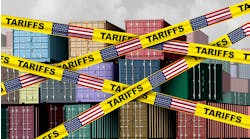I don't know who Marc Levinson is, beyond that fact that he is the Congressional Research Service's "Section Research Manager" and has been the author of the service's "U.S. Manufacturing in International Perspective" for the past three years. However, his reports just might be the most powerful annual blow the manufacturing community absorbs in the public policy debate.
The CRS report's tagline is "Informing the legislative debate since 1914," which means his report informs legislators. For the past three years, the report seems to have been reassuring them not only that "all's well in U.S. manufacturing," but also reinforcing the mistaken belief that U.S. manufacturing's relative decline compared to other countries represents a good and natural evolution of the nation's economy.
Generally, the CRS report seems to strive to be a neutral accounting, hewing closely to comparing the "position of the United States relative to other countries." However, several passages seem to explain away concern about a U.S. decline.
Take this passage:
"… it is important to note that a high ratio of manufacturing value added to GDP is not necessarily a sign of economic vibrancy. To the contrary, a high ratio may indicate that various policies or practices, such as labor regulations, credit subsidies, or protection from imports, are standing in the way of a reallocation of capital and labor from manufacturing to other sectors in which they might contribute more to economic growth."
If that doesn't sound like someone who ascribes to the "third-wave" theory that developed economies eventually move away from manufacturing, I don't know what would. I find it hard to believe that someone without that bias would make that statement.
Here's another passage referring to the U.S. decline in manufacturing employment:
"… but its decline … since 1990 is in line with the changes in several European countries and Japan."
Ultimately, I hope the legislators who read this report take a look at the first of the report's main findings and be shocked.
Perhaps, Levinson didn't intend to soft-peddle the challenges from other countries, but repeatedly the report notes that the U.S. performs well compared to other "wealthy" countries or countries "with relatively high per capita incomes," which has the effect, again, of suggesting that such decline is to be expected and of explaining away the challenge from the less developed Asian countries.
I'm not the only person to perceive that the data and the analysis presented in the report leans toward the positive. The Information Technology & Innovation Foundation recently published a detailed 17-page critique, concluding: "The health of U.S. manufacturing is much shakier than the Pollyannaish SRS report suggests."
Ultimately, I hope the legislators who read this report take a look at the first of the report's main findings and be shocked. That first finding is as follows:
"China displaced the United States as the largest manufacturing country in 2010, as the United States' share of global manufacturing activity declined from 30% in 2002 to 17.4% in 2012."
The thought that I hope occurs to the legislators is: Wasn't our country's goal to transition to higher-value-added manufacturing, in order to retain manufacturing leadership? And if so, shouldn't we be concerned that China has overtaken the U.S. as the leader in that measure?
I think it's up to manufacturing leaders to make sure our legislators get the correct message.






